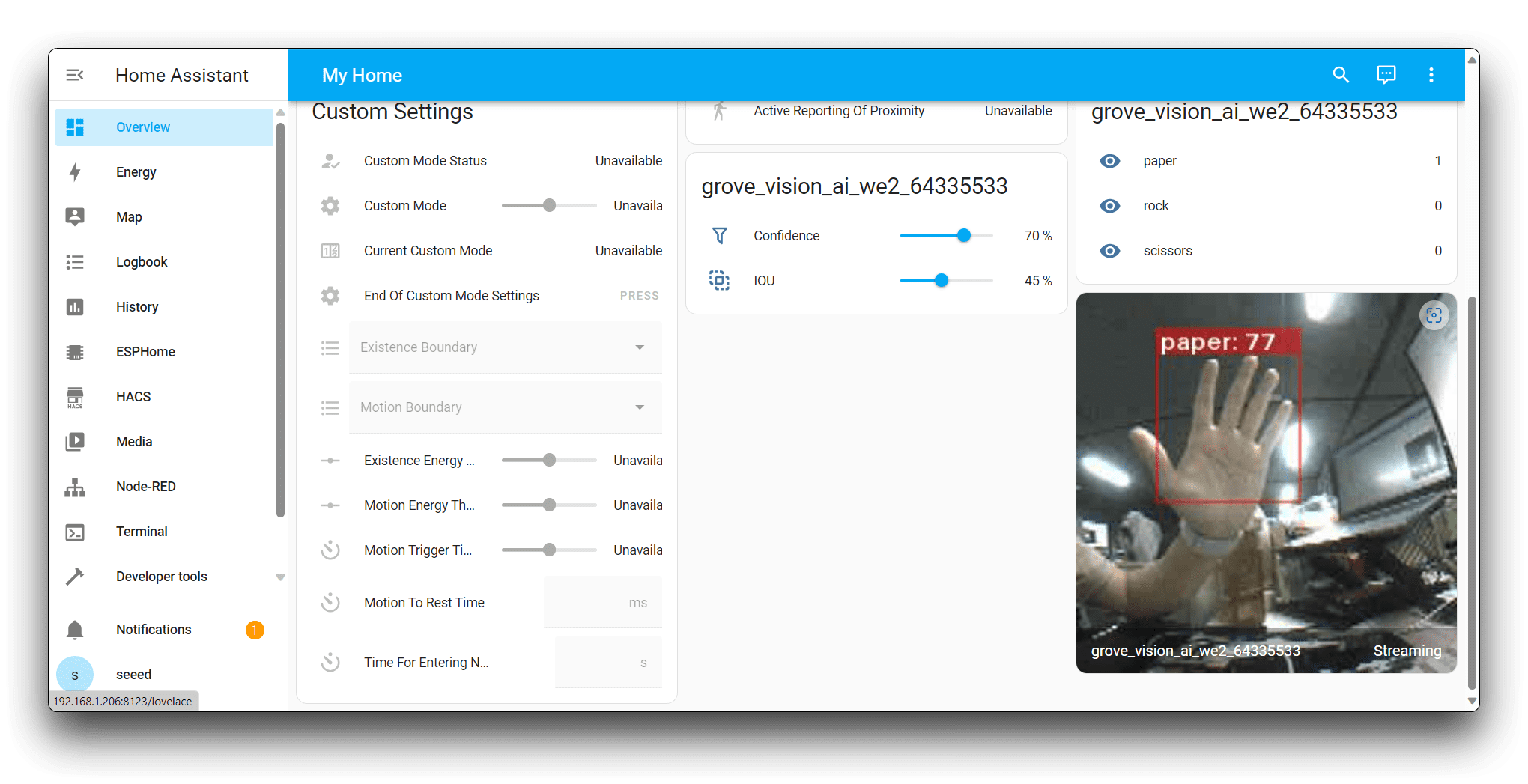To add a custom repository to Home Assistant, navigate to the Add-on Store, click the three dots at the top right, and select ‘Repositories’. Copy and paste the repository URL into the dialog box that appears and click ‘Add’. In this article, we are going to talk about how Home Assistant Add Custom Repository.
Home Assistant enthusiasts often seek to extend their smart home capabilities by incorporating custom repositories. These repositories contain add-ons that offer additional features and integrations not found in the official Home Assistant Add-on Store. By adding custom repositories, users can explore a wider array of tools and updates, customizing their home automation to their precise needs and preferences.
The process is straightforward and can greatly enhance the functionality of any Home Assistant setup. For those eager to dive into a more personalized smart home experience, incorporating custom repositories is an essential step. Remember to only add repositories from trusted sources to ensure the security and stability of your system.
Getting Started With Home Assistant
Welcome to the exciting realm of smart home automation with Home Assistant! Embarking on this journey transforms your living space into a smarter, more efficient environment. Below is a step-by-step guide to get you started with Home Assistant smoothly.
What is a Home Assistant?
What Is Home Assistant?
Home Assistant is an open-source platform for home automation. It connects with your smart devices, offering control and management from a central point. The platform is versatile, catering to numerous brands and technologies. This is where your road to a smarter home begins.
The Role Of Custom Repositories
Custom repositories extend Home Assistant’s capabilities. They allow users to add new features and integrations not available in the official repository. These repositories are managed by the community, bringing a wealth of creativity and functionality to your smart home setup.
- Discover new add-ons: Find tools and plugins to enhance your system.
- Unleash potential: Open up possibilities with unique integrations.
- Community-driven: Benefit from collective knowledge and support.
To add a custom repository:
- Open Home Assistant interface.
- Navigate to the Add-ons section.
- Select ‘Add-on Store’.
- Click on the ‘…’ at the top-right.
- Choose ‘Repositories’.
- Enter the URL of the custom repository.
- Hit ‘Add’.
As you grow your smart home, remember:
| Action | Outcome |
|---|---|
| Adding custom repos | More features |
| Community interaction | Support and new ideas |
| Regular updates | Optimal performance |
Custom repositories are golden tickets for personalized automation. Be sure to select trustworthy sources to maintain system security and stability.

Credit: www.home-assistant.io
Prepping Your Home Assistant For Customizations
Welcome to the exciting world of customizing your Home Assistant! Personalizing this powerful automation platform can unleash new functionalities. It’s vital to take the correct steps before adding custom repositories. Follow this essential guide to prepare your Home Assistant setup for a smooth customization experience.
Essential Requirements
- Compatibility Check: Confirm your device is compatible with Home Assistant.
- Stable Internet Connection: Ensure a reliable network for downloading files and components.
- Home Assistant Version: Running the latest Home Assistant version prevents issues.
- Administrator Access: Have admin rights for making system changes.
Backup Your Current Setup
Backing up is crucial before making any changes. It saves your current settings and data.
- Go to Home Assistant’s main page.
- Navigate to Supervisor, then Snapshots.
- Click + Add Snapshot.
- Document everything: Label your snapshot for easy identification.
- Wait for the process to complete. Store copies in a safe location.
Now, your Home Assistant is ready for customizations. Follow these prep steps to ensure a hassle-free experience!
Step-by-step Guide To Adding Custom Repositories
Welcome to our step-by-step guide on adding custom repositories to Home Assistant. Custom repositories enhance your smart home’s capabilities by unlocking access to a wide array of unique add-ons. Let’s dive into how you can expand your Home Assistant’s functionality with this easy-to-follow tutorial.
Navigating To The Add-on Store
Getting to the Add-On Store is your first step. Once logged into Home Assistant, look for the ‘Supervisor’ panel. Click on it to reveal more options. Next, click on ‘Add-on Store’. Here you’ll find officially supported add-ons as well as any other repositories you’ve added.
Adding A Repository Url
- Inside the Add-On Store, locate the three dots at the top right corner.
- Click on them and select ‘Repositories’ from the drop-down menu.
- In the dialog that opens, enter the custom repository URL.
- Click ‘Add’, and the new repository will start loading.
- Once loaded, the new add-ons should appear in the Add-On Store.
Troubleshooting Common Issues
Even with a guide, sometimes things don’t go as planned. Here are some quick tips:
- Check the URL: Ensure that the URL is correctly entered.
- Internet Connection: A stable connection is necessary.
- Home Assistant Version: Some repositories require the latest version of Home Assistant.
- Check the Logs: Error messages in the Home Assistant logs can offer clues.
Following these steps should help you add custom repositories successfully.

Credit: www.kevsrobots.com
Exploring New Possibilities With Custom Add-ons
Home Assistant opens a universe of smart home automation. With custom add-ons, users can extend functionality beyond the core system. As Home Assistant users look to tailor their setups, custom repositories offer endless possibilities to personalize their smart home experience.
Popular Custom Repositories Highlights
Custom repositories bring fresh capabilities to your Home Assistant setup. These community-driven treasures range from media servers to weather updates. Below is a glance at some standout repositories:
- HACS (Home Assistant Community Store): This is a gateway to a vast collection of custom integrations and plugins.
- ESPHome: Users wanting to integrate DIY home automation pieces can leverage this platform for seamless integration.
- Node-RED: It offers a visual approach to programming and is ideal for creating complex automation flows.
Selecting Quality Add-ons
Selecting the right add-ons requires a focus on reliability and compatibility. Follow these tips when choosing add-ons:
- Check Developer Activity: Look for add-ons with regular updates and active support.
- Read Reviews: User feedback can provide valuable insight into performance issues or benefits.
- Compatibility: Ensure the add-on works with your current Home Assistant version.
By embracing custom repositories, Home Assistant users can explore new automation horizons and personalize their systems to their liking.
Maintaining And Updating Your Add-ons
Keeping add-ons up-to-date is crucial for your Home Assistant setup. It’s not just about having the latest features. It’s about making sure everything functions effectively, safely, and smoothly. Here’s how to stay on top of your add-on game.
Regular Updates For Security And Performance
The security of your smart home depends on its weakest point. Regular updates fix vulnerabilities and improve performance. Follow these steps to update your add-ons:
- Open Home Assistant.
- Go to ‘Supervisor’ and click ‘Add-on Store’.
- Click on the add-on to update.
- Press ‘Update’ if available.
Tip: Enable ‘Auto-update’ for hassle-free maintenance. This keeps your add-ons fresh without manual checks.
When To Remove Or Replace An Add-on
Sometimes, an add-on might not meet your needs anymore. Perhaps it’s sluggish, or a new one has better features. Consider removing or replacing it when:
- It’s no longer updated by the developer.
- It causes errors or slows down your system.
- A better alternative is available.
To remove an add-on:
- Open Home Assistant.
- Go to ‘Supervisor’.
- Select the add-on to remove.
- Click ‘Uninstall’.
Remember: Always back up your configuration before making changes!
Community And Support For Custom Add-ons
The allure of customization in Home Assistant reaches new heights with custom add-ons. A strong community comes with support aplenty. Users can tailor their smart home experience to perfection.
Finding Help Online
Struggles with custom add-ons are common, yet the solution is often simple. Knowing where to find help is key. The following resources are goldmines:
- Home Assistant Forums: A place to connect, ask questions, and share insights.
- Discord Channels: For real-time chat and troubleshooting.
- Reddit: A vast community for advice and inspiration.
Keep these resources handy:
forums.homeassistant.io
discord.gg/homeassistant
reddit.com/r/homeassistant
Users often find answers in previous discussions. Remember to search before posting a new query!
Contributing To The Home Assistant Community
Contributions fuel the continuous growth of the community. Here’s how to join in:
- Share knowledge: If you’ve solved a unique problem, post your solution.
- Create resources: Step-by-step guides help novices.
- Develop add-ons: Have a knack for coding? Build something new for the ecosystem.
Steps to contribute:
- Check the repository guidelines.
- Keep your code tidy and commented.
- Submit your add-on for review.
Support flows from every corner of the community. Everyone can make a mark in the world of Home Assistant.

Credit: www.zdnet.com
Frequently Asked Questions On Home Assistant Add Custom Repository
How To Add A Custom Repository In Home Assistant?
To add a custom repository in Home Assistant, navigate to the ‘Add-on Store’, click on the three dots in the top right corner, and select ‘Repositories’. Enter the custom repository’s URL, then click ‘Add’, and the new add-ons will appear.
What Is A Custom Repository In Home Assistant?
A custom repository in Home Assistant is a collection of add-ons not included in the official store. These add-ons have been created by the community, providing additional functionality and integrations for your smart home setup.
Are Custom Repositories Safe To Use In Home Assistant?
Custom repositories can be safe but vary based on the source. Always use repositories from trusted developers and read reviews in the community. Regularly updating and following best security practices is also recommended.
Can I Remove A Custom Repository From Home Assistant?
Yes, to remove a custom repository, go to the ‘Add-on Store’, click on ‘Repositories’, find the repository you wish to remove, click ‘Delete’ next to it, and then refresh the add-on store page.
Conclusion
Wrapping up, and integrating a custom repository in Home Assistant can elevate your smart home experience. It unlocks access to unique add-ons and tweaks tailored to your needs. Remember, a thoughtful approach to adding repositories ensures a smooth and secure smart home setup.
Embrace these possibilities and take control of your automated environment.

I am a technology writer and blogger with 17 years of experience in the fields of information technology, artificial intelligence, cyber security, automated systems, and the latest technology trends.

